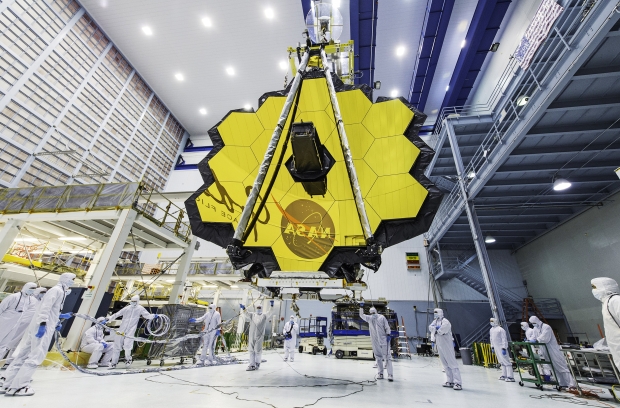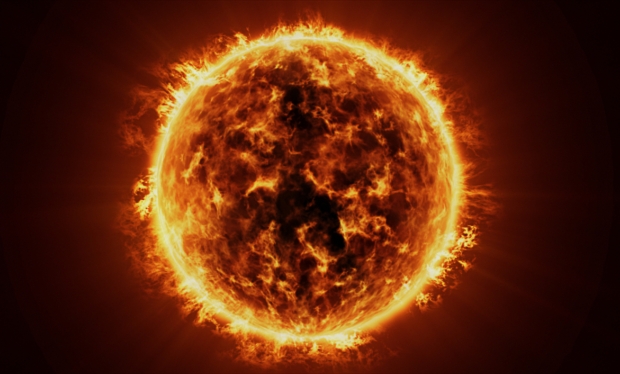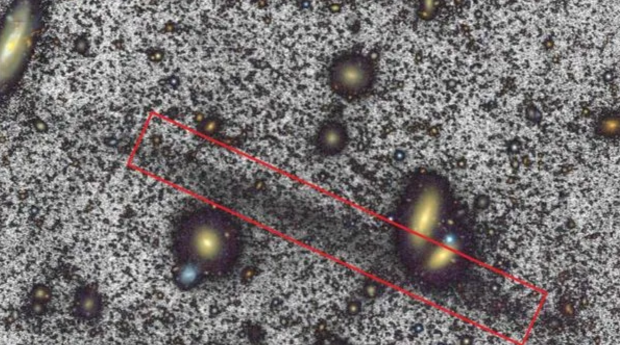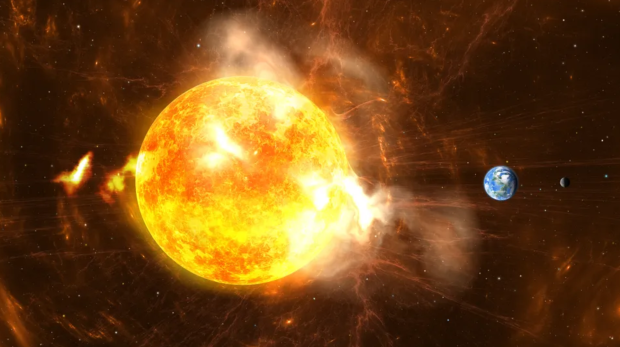Science, Space, Health & Robotics News - Page 17
NASA confirms the Sun's recent record-breaking solar fare is Earth-directed
NASA has taken to its website to confirm the Sun emitting a massive solar flare on December 12, 2023, and while it's not headed for Earth directly, it does have an Earth-directed component.
NASA's Solar Dynamics Observatory, which is constantly monitoring the Sun for events such as these, is operated by the National Oceanic and Atmospheric Administration (NOAA) Space Weather Prediction Center, which confirmed the Sun released a powerful X2.8-class solar flare - the strongest solar flare of this current cycle (Solar Cycle 25) and the most powerful eruption the Sun has produced since September 2017.
Additionally, NOAA wrote on its website an update about the solar flare, saying, "This is likely one of the largest solar radio events ever recorded," with radio communication interference being "felt from one end of the nation to the other. Furthermore, NOAA adds that it is currently evaluating possible Coronal Mass Ejections (CME) that could be associated with the solar flare and will provide updates after the analysis has been conducted.
NASA's Webb telescope spies deep space object that shouldn't exist
NASA's James Webb Space Telescope, the most powerful space telescope in the world, has been used to try and answer the following question - what are the smallest stars?
A team of researchers from Pennsylvania State University pointed Webb's Near-infrared Camera (NIRCam) at the heart of the star cluster IC 347, which resides in the star-birthing Perseus star-forming region. The recovered data revealed the discovery of a record-breaking free-floating brown dwarf star and two other "failed stars". Notably, the "failed star" nickname linked to brown dwarf stars can be attributed to brown dwarf stars never gaining enough mass to trigger nuclear fusion, the reaction at the core of a fully grown star.
The team used the NIRCam image to identify any potential targets for the smallest possible star and followed up with Webb's NIRSpec (Near-Infrared Spectrograph) micro shutter array. The results yielded three targets weighing three to eight Jupiter masses. These targets each had surface temperatures ranging from 830 to 1500 degrees Celsius. Notably, the record-breaking smallest of the three weighs approximately three to four times Jupiter.
Continue reading: NASA's Webb telescope spies deep space object that shouldn't exist (full post)
Elon Musk is building his own 'tuition-free' university with $100 million
Tesla and SpaceX CEO Elon Musk is planning to fund the construction of a university in Austin, Texas, according to tax filings obtained by Bloomberg.
The upcoming educational institution has been gifted $100 million of seed money and, per the tax filing, will concentrate efforts on STEM programs in both primary and secondary school.
The organization behind the project is currently seeking accreditation from the Georgia-based Southern Association of Colleges and Schools Commission on Colleges, explaining that the new university will employ "experienced faculty" and include a traditional curriculum that is backed by learning experiences through "simulations, case studies, fabrication/design projects, and labs."
World first supercomputer designed to simulate a human brain to be turned on
A team of researchers has announced they will be turning on the world's first supercomputer that's designed to emulate the neural network of a human brain.
The researchers from Western Sydney University Australia announced via a press release that the supercomputer called DeepSouth is capable of emulating a network of spiking neurons at 228 trillion synaptic operations per second, which puts its performance near that of the operational power of a human brain. The team believes that designing a supercomputer comparable to the scale and power of a human brain will lead to a greater understanding of how our brains compute.
Most researchers designing supercomputers build them around raw compute power, but since the team behind DeepSouth is attempting to replicate a brain's network of neurons, the design means it will be more efficient, less power-hungry, and likely cheaper. The researchers believe that creating a simulated brain supercomputer will have widespread implications if more is understood about how the brain functions.
Photographer publishes 4 years in the making photo of the Sun
The perfect photograph is certainly subjective, and to photographer Jack Lodge, it meant waiting four years to capture one of his favorite objects, the Sun.
The sun photographer had been chasing a specific shot of our host star for four whole years, with multiple attempts at making the shot being foiled by simple weather problems such as overcast skies. Lodge was set on capturing the Sun lining up perfectly with the Durdle Door, a natural limestone arch on the Jurassic Coast in Dorset, England. The perfect lineup happens to occur only once, two to three weeks each year.
Furthermore, reports indicate that the Sun only lines up behind the Durdle Door for less than five minutes each day (during the period when it's possible). This small window of opportunity meant Lodge had to wake up at 5:00 AM to arrive at the location in time to capture the moment. After waiting four years for the opportunity to arise, it happened, and the results are above.
Continue reading: Photographer publishes 4 years in the making photo of the Sun (full post)
Scientists create computer from human brain tissue and it can hear voices
A team of researchers has published a new paper in the journal Nature Electronics that details the creation of a "biocomputer" that consists of lab-grown human brain tissue and electronic circuits.
The scientists behind the study explained they took a bunch of bundled human cells called "organoids" and changed them into neurons, which were then attached to a circuit board. Together, these ingredients created what the researchers call "Brainoware," a so-called bridge between AI and organoids. The question the researchers asked themselves was, "Can we leverage the biological neural network within the brain organoid for computing?"
The researchers hooked up Brainoware to a plate made up of thousands of electrodes. The scientists then sent data in the form of electric pulses to the organoid, and then "decoded" the response through a machine-learning algorithm. According to the study, the team was able to get the organoid to recognize the voices of different people speaking after being fed the data from 240 voice recordings.
134-year-old photographic film from 1889 developed revealing two mysterious figures
Miss Evelyn Mackenzie is part of what is only an epic piece of film history, as the photographic film she snapped back in 1889 has finally been developed 134 years later.
The film that was recently developed was a Kodak nitrate-based celluloid roll film and was originally shot on a No.1 Kodak camera owned by Miss Evelyn Mackenzie. As the name suggests, the No.1 Kodak camera was the very first camera the company produced and was the first camera to successfully use negative film.
As for what it was capable of, reports indicate it was able to take up to 100 photos, and for buyers to get those photos, they would need to send the camera back to Kodak, where the images were developed, then printed and mailed back to the photographer along with their camera + fresh film. Notably, the camera was only able to take "brilliant instantaneous pictures" in "clear sunlight".
Scientists discover mysterious object 10x longer than the Milky Way in deep space
By complete coincidence, astronomers have discovered and mapped the first-ever stellar stream, an elongated thread of gravitationally linked stars that have been likely torn away from their original galaxies, only to be left in intergalactic space (the space between galaxies).
Previously, astronomers have mapped these stellar streams within galaxies but never outside of galaxies. According to the study published on November 30 in the journal Astronomy & Astrophysics, the researchers identified and mapped the first intergalactic stellar stream called the Giant Coma Stream (GCS).
The paper states the GCS passes through the Coma Cluster, also called Abell 1656, which is a group of more than 1,000 galaxies located approximately 321 million light years from our planet. The team that discovered the GCS isn't quite sure how it has grown so large, with speculation pointing toward the original target for their observations - dark matter. The team suggests that it's possible the currently invisible dark matter may have caused GCS to form into its current shape.
Scientists discover Sun eruptions may cause train accidents during peak travel times
New research has found that Sun eruptions that result in solar storms may cause train accidents during peak travel times.
The new study published in the journal Space Weather by researchers from Lancaster University in England found that solar storms caused by Sun eruptions have a chance of interfering with electrical signaling stations, which may result in the railroad indicators switching from red (stop) to green (go). For those that don't know, the Sun ejects charged particles in the form of large, fast-moving waves.
This wave of charged particles slams into Earth's magnetic field, sending charged particles toward the planet's poles. The interaction between the solar particles and the molecules in Earth's atmosphere produces what are known as auroras. Additionally, depending on the severity of the CME, or solar flare, the solar storm can be so powerful it knocks out radio communications and electrical equipment.
NASA's iconic spacecraft launched in 1977 can't phone home anymore
Voyager 1 and Voyager 2 are the two longest-operating spacecraft in history, and now NASA has announced that the first of the duo is unable to send data back to Earth.
The space agency took to its website to briefly explain the issues it's facing with Voyager 1 communications. Firstly, NASA states that Voyager 1's flight data system, which is responsible for collecting onboard engineering information about the spacecraft's scientific instruments, has experienced a glitch that has severed communications with Voyager 1's telecommunications unit (TMU).
This overall problem is causing Voyager 1 to send back its data packages in a way that appears "stuck," as it's "transmitting a repeating pattern of ones and zeros." Notably, Voyager 1 and Voyager 2 are currently in interstellar space, the region of space between stars. Both spacecrafts are approximately 15 billion miles from Earth, and due to their distance, a transmission takes 22.5 hours to reach the spacecraft. One back-and-forth communication with Voyager 1 is typically 45 hours.
Continue reading: NASA's iconic spacecraft launched in 1977 can't phone home anymore (full post)










